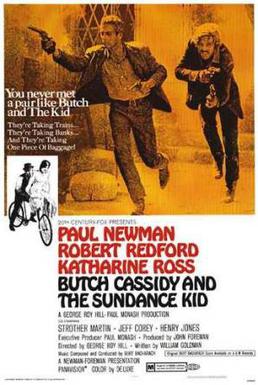
Butch Cassidy and the Sundance Kid is a 1969 American Western buddy film directed by George Roy Hill and written by William Goldman. Based loosely on fact, the film tells the story of Wild West outlaws Robert LeRoy Parker, known as Butch Cassidy, and his partner Harry Longabaugh, the "Sundance Kid", who are on the run from a crack US posse after a string of train robberies. The pair and Sundance's lover, Etta Place, flee to Bolivia to escape the posse.
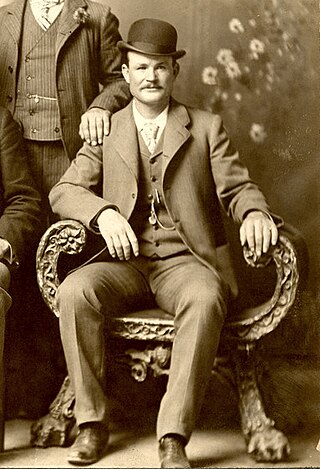
Robert LeRoy Parker, better known as Butch Cassidy, was an American train and bank robber and the leader of a gang of criminal outlaws known as the "Wild Bunch" in the Old West.

George Sutherland Currie, also known as George "Flat-Nose" Curry, was a Canadian-American robber of the American Old West. Curry was a mentor to Harvey Logan, who would adopt the surname Curry, and the two robbed banks together before both became members of Butch Cassidy's Wild Bunch. Curry was killed by a sheriff while rustling in Grand County, Utah.

Butch Cassidy's Wild Bunch was one of the loosely organized outlaw gangs operating out of the Hole-in-the-Wall, near Kaycee in Wyoming, a natural fortress of caves, with a narrow entrance that was constantly guarded. In the beginning, the gang was referred to as the "Hole in the Wall Gang" during the Old West era in the United States. It was popularized by the 1969 movie, Butch Cassidy and the Sundance Kid, and took its name from the original Wild Bunch. The gang was led by Butch Cassidy, and it included his closest friends Elzy Lay, the Sundance Kid, Tall Texan, News Carver, Camilla "Deaf Charley" Hanks, Laura Bullion, Flat-Nose Curry, Kid Curry, and Bob Meeks. They were the most successful train-robbing gang in history.
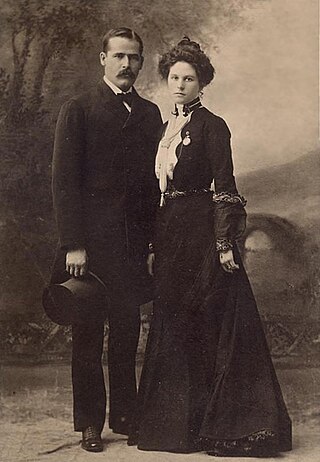
Harry Alonzo Longabaugh, better known as the Sundance Kid, was an outlaw and member of Butch Cassidy's Wild Bunch in the American Old West. He likely met Butch Cassidy during a hunting trip in 1883 or earlier. The gang performed the longest string of successful train and bank robberies in American history.

Thomas Edward Ketchum was an American cowboy who later became an outlaw. He was executed in 1901 for attempted train robbery. The execution by hanging was botched; he was decapitated because the executioner used a rope that was too long.

Harvey Alexander Logan, also known as Kid Curry, was an American outlaw and gunman who rode with Butch Cassidy and the Sundance Kid's infamous Wild Bunch gang during the late 19th and early 20th centuries. Despite being less well-known than his fellow gang members, he has since been referred to as "the wildest of the Wild Bunch", having reputedly killed at least nine law enforcement officers in five shootings and another two men in other instances. He was involved in numerous shootouts with police and civilians and participated in several bank and train robberies with various gangs during his outlaw days.
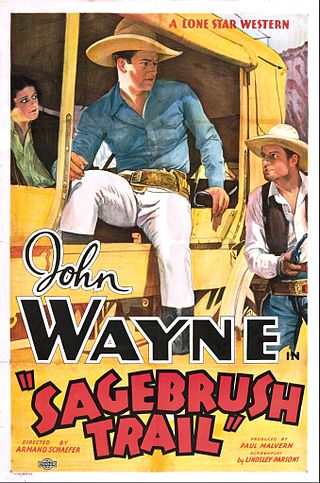
Sagebrush Trail is a 1933 American Pre-Code Western film with locations filmed at Bronson Canyon starring John Wayne and featuring Lane Chandler and Yakima Canutt. It was the second Lone Star Productions film released by Monogram Pictures. It was shown as An Innocent Man in the UK, and this version was later released in a colorized version on home video.
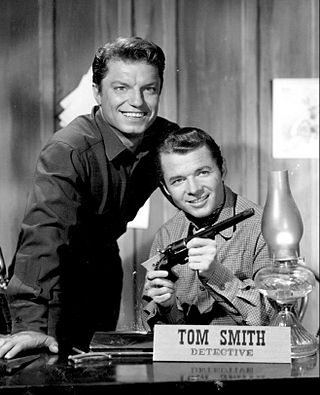
Whispering Smith is an American Western television series that originally aired on NBC. It has the same ultimate source material as the 1948 film of the same name, but differs in some significant respects.

Posse from Hell is a 1961 American Western film directed by Herbert Coleman and starring Audie Murphy and John Saxon.
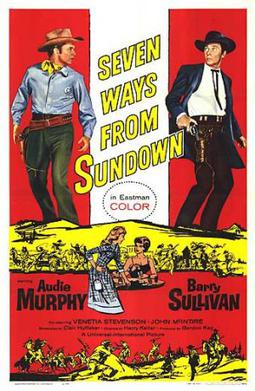
Seven Ways from Sundown is a 1960 American Western film directed by Harry Keller and starring Audie Murphy and Barry Sullivan. It is based on the novel of the same name by Clair Huffaker, who also wrote the script.

The Desperadoes is a 1943 American Western film directed by Charles Vidor and starring Randolph Scott, Claire Trevor, Glenn Ford, Evelyn Keyes and Edgar Buchanan. Based on a story by Max Brand, the film is about a wanted outlaw who arrives in town to rob a bank that has already been held up. His past and his friendship with the sheriff land them both in trouble. The Desperadoes was the first Columbia Pictures production to be released in Technicolor.
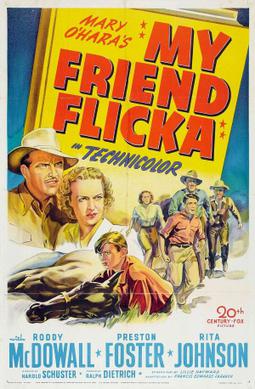
My Friend Flicka is a 1943 American Western film about a young boy, played by Roddy McDowall, who is given a young horse to raise. It is based on Mary O'Hara's popular 1941 children's novel of the same name. Thunderhead, Son of Flicka, released on March 15, 1945, was the sequel to My Friend Flicka.

Hell Bent for Leather is a 1960 American CinemaScope Western film directed by George Sherman and starring Audie Murphy, Felicia Farr, Stephen McNally and Robert Middleton. The film was based on the 1959 novel Outlaw Marshal by Ray Hogan and filmed on location in the Alabama Hills of Lone Pine, California.

Badman's Territory is a 1946 American Western film starring Randolph Scott. It was followed by the loose sequels Return of the Bad Men (1948) and Best of the Badmen (1951).
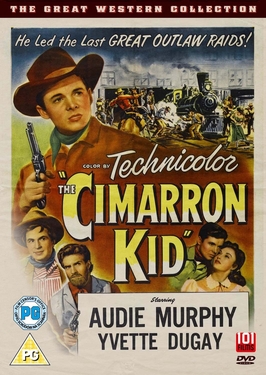
The Cimarron Kid is a 1952 American western film directed by Budd Boetticher and starring Audie Murphy, Beverly Tyler and Yvette Duguay. It was produced and distributed by Universal Pictures.

Sierra is a 1950 American Western film directed by Alfred E. Green and starring Wanda Hendrix, Audie Murphy and Burl Ives. The film was based on the 1937 novel The Mountains Are My Kingdom by Stuart Hardy.
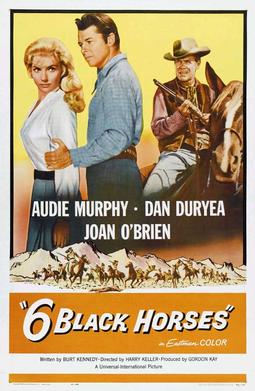
Six Black Horses is a 1962 American Western film directed by Harry Keller and starring Audie Murphy, Dan Duryea and Joan O'Brien.

The Quick Gun is a 1964 American Techniscope Western film directed by Sidney Salkow and starring Audie Murphy. It was the second of four films produced by Grant Whytock and Edward Small's Admiral Pictures in the 1960s.
Gunpoint is a 1966 American Western film directed by Earl Bellamy and starring Audie Murphy. It was Murphy's final film for Universal Pictures.



















